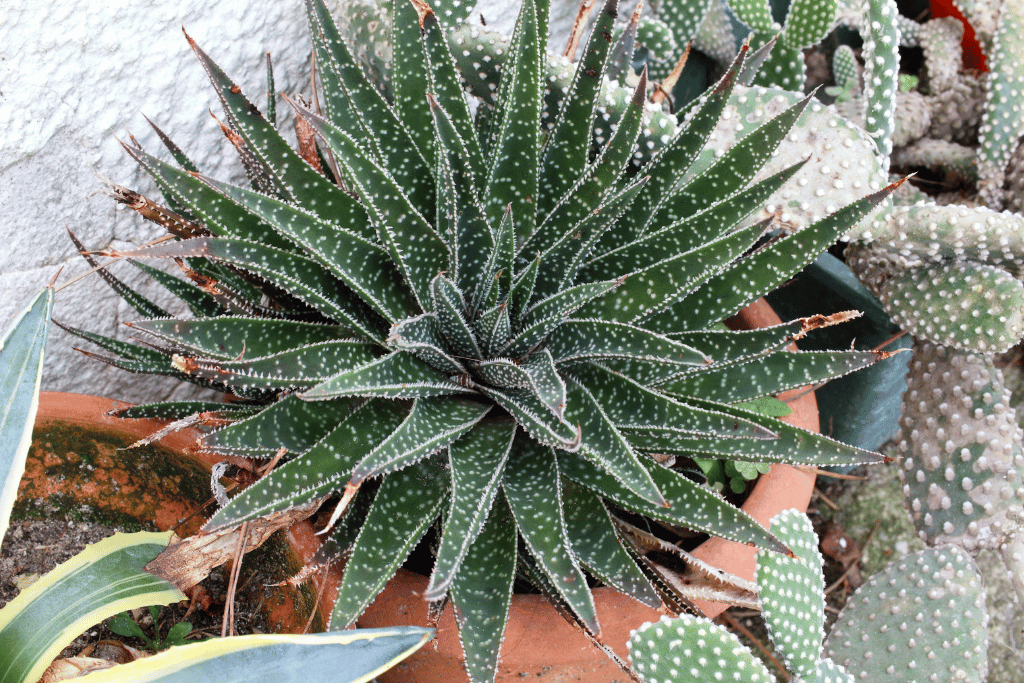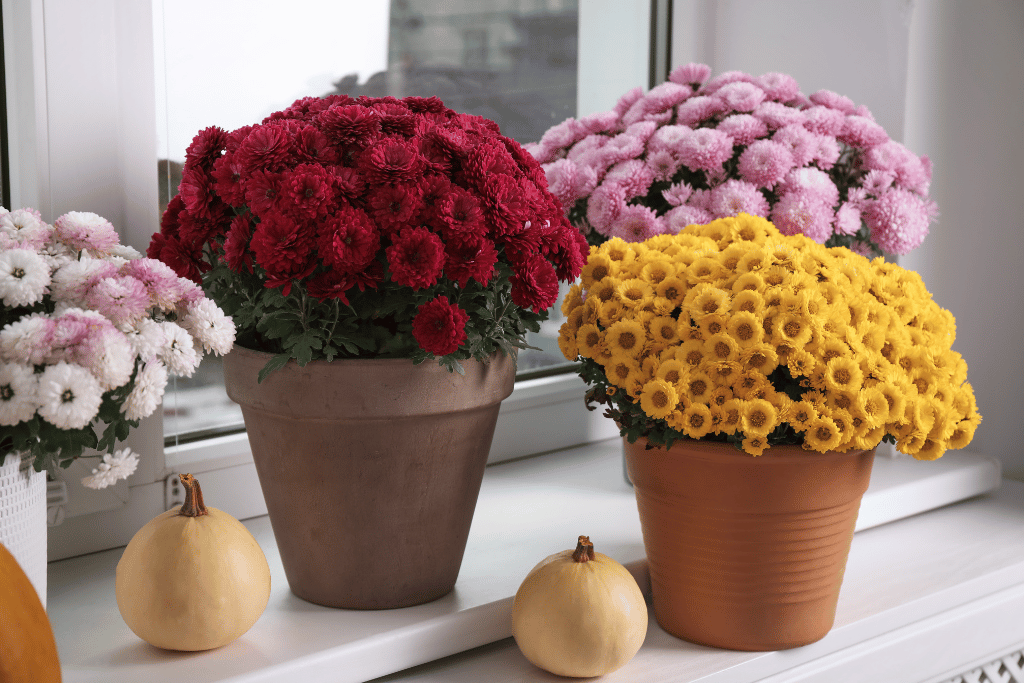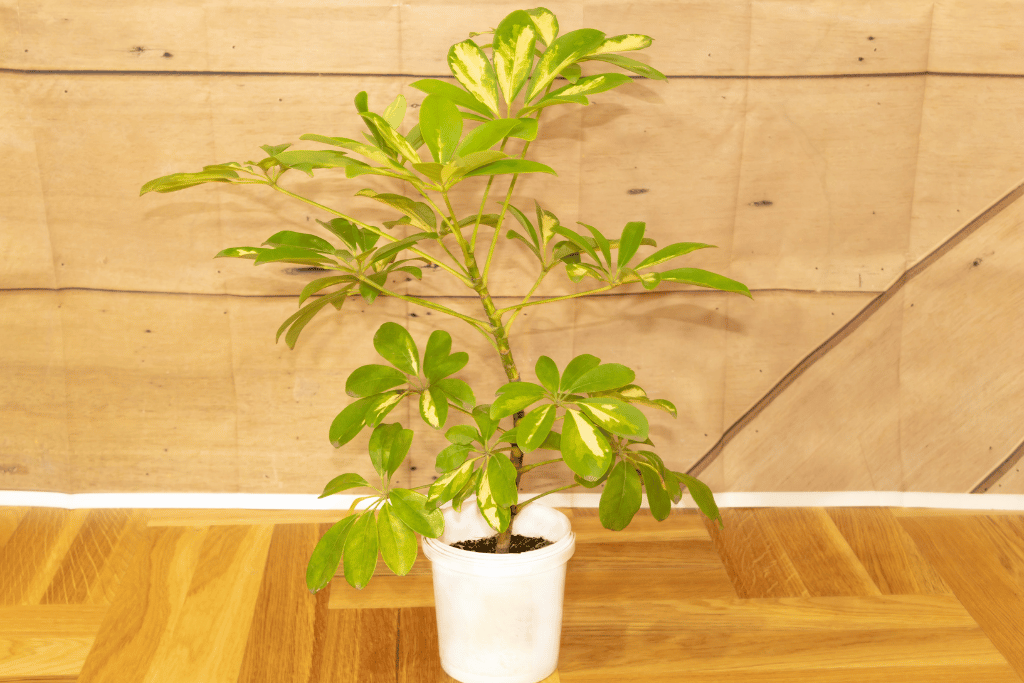
Ever been to a garden center and thought you were picking up an Aloe Vera, only to realize it’s not what you thought it was? Well, don’t worry, you’re not alone! There are plenty of plants that look like Aloe Vera from terrestrial greens to even aquatic ones.
Let’s take a closer look at the con artists that most commonly trick your eyes and unveil their distinctive traits and care needs.
Plants Easily Mistaken For Aloe Vera
1. Haworthia

Haworthia is a succulent that often raises confusion, as it looks quite similar to its close cousin, Aloe Vera. This plant is native to South Africa and is prized for its unique, delicate appearance. It has thick, fleshy leaves that resemble the ones seen on an Aloe plant, but they have a more translucent outlook and are frequently dotted with white stripes or bumps.
Haworthia is an excellent choice for both indoor and outdoor gardening, as it doesn’t require much maintenance. If you’re planning to keep it in the house or apartment, make sure you choose a bright spot with plenty of natural light.
2. Gasteria

If you’re looking to fill your empty pots with succulent plants that look like Aloe Vera, you cannot go wrong with Gasteria (Ox Tongue). Hailing from South Africa, your new green friend may resemble its relative since it’s got long, narrow leaves that grow in a rosette formation and are densely splattered with white or brown spots.
Some species also have small, tubular flowers that grow on spikes and are usually pink or orange in color. Put Gasteria in well-drained soil, provide it with easy access to sunlight, and water it now and then, and you’ll get to see it thrive for a long-time.
3. Agave

Among the numerous plants that look like Aloe Vera, agave surely secures itself a prime spot. This large succulent is native to Mexico and is known for its long, spiky leaves that alone would make you feel you just found an Aloe plant. However, some leaf details, such as extra stiffness and defined edges will uncover the green’s true identity. Agave is highly drought-tolerant and well-adapted to arid conditions, so it’s prone to root rot if overwatered. Also, we’d rather suggest planting it outside, as it can grow large and take up quite some space.
4. Bergeranthus

A lovely little addition to any indoor or outdoor garden, Bergeranthus comes close to Aloe Vera regarding physical attributes. It has a rosette of soothing green, plump leaves that are soft to the touch. The surface of the leaves may be smooth or slightly textured, and some species might even have white spots or streaks.
Bergeranthus is a slow-growing plant, making it a great pick for those who prefer low-maintenance succulents with a unique touch. Water it within limits, and always allow the soil to dry out entirely between waterings. Being intolerant to frost, it’s better suited for warmer climates or indoor options.
5. Snake plant

Sansevieria, generally known as snake plant, is a frequent inhabitant of households. This leafy creature originates from West Africa and prides itself on having stiff leaves that are arranged in a circular formation. Some variants have leaves embellished with horizontal lines, making it one of the most beloved striped plants that look like Aloe Vera. The sturdy nature of snake plants allows them to survive in a range of lighting conditions, from low to bright. Plus, contrary to common belief, snake plants can flourish outside too! They require minimal watering and prefer well-aerated soil.
6. Tiger aloe

The striking stripes on its thick leaves that grow out directly from the soil create the illusion of an Aloe Vera, yet, tiger aloe is only a close relative to the original plant. Therefore, if you’re looking for a bold-looking and low-maintenance addition to your rock garden or winter garden, tiger aloe is definitely a great alternative.
7. Hechtia

We decided to break the pattern at the end of our long list of succulent plans that look like Aloe Vera, and feature a popular genus of bromeliad called Hechtia. This plant is native to Mexico and is known for its rosette of stiff, spiny leaves that spread out wide and make a bold statement in any garden. Its magnificent green leaves are ornated with white scales that give the plant a unique and slightly silvery look.
Even though there are no strict rules regarding where to plant Hechtia, we still recommend picking an outdoor location, especially in warm and humid climates. However, don’t be disheartened to buy this green even if you live in a cooler climate. In such cases, planting it in a spacious container and placing it in a humid space, like the bathroom or kitchen can also be enough to enjoy a happy and growing plant.
Poisonous Plants That Look Like Aloe Vera
1. Aloe striata

Native to the barren regions of South Africa, Aloe Striata, sometimes referred to as the Coral Aloe, is among the numerous deceptive plants that look like Aloe Vera but aren’t the real thing. With its eye-catching appearance, this succulent closely mimics the physical attributes of its cousin. However, this tricky plant carries a warning label, as it’s toxic to both pets and humans if ingested. Therefore, make sure to handle it with caution and keep it away from the reach of children and furry friends. Despite its poisonous nature, Aloe striata makes an excellent indoor or outdoor plant.
2. Aloe aristata

Aloe aristata originates from South Africa and is easily recognizable by its delicate, lace-like leaves that are arranged in a circular pattern. They are typically green in color, with white or brown spiky edges. Much as impressive as it looks, this plant may pose danger to both animals and humans who consume it. It contains compounds that can cause digestive and neurological issues, so it’s essential to plant Aloe aristata in a place where pets and small kids cannot access it easily.
3. Aloe ruspoliana

Among the plants that look like Aloe Vera, Aloe ruspoliana earned itself a distinguished spot. Why? Well, it’s an especially smart look-alike of the original plant, having tall, fleshy, and spiky leaves that grow directly out of the soil. This special green thrives in an open-air environment and between four walls as well. Although not recommended to consume, it still has an attractive appearance that naturally drives people’s attention.
4. Aloe ballyi

The list of poisonous plants that look like Aloe Vera wouldn’t be complete without Aloe ballyi or Rat Aloe, a rare species of the Asphodelaceae family that grows approximately 8 meters tall as a tree. This slow-growing flowering plant has long, spiky, grayish leaves, and a toxic twist to it. Therefore, whether you come across Aloe ballyi in its natural habitat or take up the challenge to grow it yourself, remember to stay away from consuming any part of it.
5. Aloe elata
Even though it boasts itself on having striking tall spikes of yellow flowers blooming in winter, Aloe elata makes a great Aloe Vera double. However, unlike the healing plant, the foliage of Aloe elata emits a foul smell, which may be considered a warning sign not to eat it. It’s best to keep this plant as an outdoor addition to your garden, as it requires plenty of sunlight to bloom and remain healthy. One more tip: place this green in a spot with enough space to stretch and grow to enjoy a spectacular plant that will surely be a conversation starter!
6. Aloe africana

Of all the poisonous plants that look like Aloe Vera, Aloe africana is an especially beautiful one. This plant grows tall and bushy, with cubby and pointy leaves that give the impression of being filled with gel. However, no matter how inviting this green may look, it’s important to keep in mind that it’s toxic to both animals and humans. Although the toxicity level of Aloe africana is moderate, ingesting it can cause digestive issues such as vomiting, diarrhea and severe stomach pain.
On the bright side, it’s a definite showstopper of an outdoor plant that thrives when watered sparingly and put in a sunny spot for it to soak up all the rays. With its exotic appearance, Aloe africana adds a pop of excitement to any porch or garden. So, go ahead, give this dazzling succulent a shot and watch it shine!
Other Types of Plants That Look Like Aloe Vera
1. Young pineapple plant

You wouldn’t even think, but of all the young plants that look like Aloe Vera, the pineapple plant wins by far. Its rosette-like, graceful and sharp leaves have a close resemblance to the ones found on the healing plant. However, this green’s leaves differ in that they are wider, smoother and have a distinctive tropical look.
When put in sunny surroundings, given water infrequently and protected from cold temperatures, the young pineapple plant can grow into a lush and vibrant inhabitant of your house or garden.
2. Java fern

What? Are there even aquarium plants that look like Aloe Vera? Very much so! The Java fern is an excellent example of that. This common aquatic plant has pointed leaves set in a circular shape. However, unlike Aloe Vera, which features thick and triangular-shaped leaves, the Java fern rather grows pointed and strap-like ones.
Moreover, the key difference lies in the fact that the former plant is terrestrial, while the latter is aquatic. As a slow-growing, hardy green that doesn’t require soil and can grow attached to rocks of driftwood, this water creature makes a great fish tank decoration and shelter for fish.
3. Anubias

Let’s finish up the list of aquatic plants that look like Aloe Vera with a sturdy green called Anubias. It can grow in rosettes, just like the Aloe plant, but its broad, heart-shaped leaves set it apart from the beloved miracle green. It does well in low light and feels at home in fish tanks, where there are suitable attachment possibilities to rocks and other décor elements. Also, its unique ability to absorb nutrients from the water makes Anubias an easy-care benefactor to your aquatic ecosystem. So, if you’re looking to add a touch of greenery to your tank, don’t mistake it for Aloe Vera, as they are two very different plants with different care requirements.
Conclusion
In the above sections, we covered a wide range of plants that look like Aloe Vera, from succulents to bromeliads and poisonous plants to aquatic greens. With so many magnificent options to choose from, don’t be surprised to find by-passers ogling your garden from behind the fence or have your visitors drawn to your indoor pot-dwellers. So, why settle for an ordinary Aloe Vera when you can have a stunning Haworthia, tiger aloe, or even a pineapple plant? Embrace your green thumb, get creative, and have fun!
Frequently Asked Questions (FAQ)
Is Aloe Vera the only edible plant mentioned in the list?
Yes. Other plants that look like Aloe Vera shouldn’t be consumed at all. The healing Aloe is widely used for its medicinal properties and can be consumed in small amounts, either by ingesting the gel found inside its leaves or using it as an ingredient in health and beauty products. However, it’s important to note that even this plant should be used in moderation and under the guidance of a healthcare provider.
What symptoms can the toxic variants of Aloe Vera cause?
A diverse range of digestive and neurological issues, including but not limited to:
· Vomiting
· Diarrhea
· Stomach pain
· Nausea
· Headache
· Dizziness
· Weakness
· Tremors
· Seizures
· Loss of consciousness
Can Aloe Vera be planted in a fish tank?
No, it is not suitable for use as aquarium plants. Aloe vera is a succulent that is adapted to arid conditions and cannot survive in a constantly wet environment like a fish tank.



